Fertilizing is the act of giving your plants nutrients in order to provide them with the diet they need to grow and flower under the best conditions. Cannabis plants mainly absorb nutrients via their roots. They also have the capacity to absorb nutrients via their leaves, although not as much. There are three different ways to fertilize your cannabis plants:
- Liquid nutrients and additives mixed in with water.
- Powdered nutrients and additives, mixed or sprinkled in soil.
- You can also dilute liquid fertilizers and additives in water and then spray it on your plants (foliar fertilization).
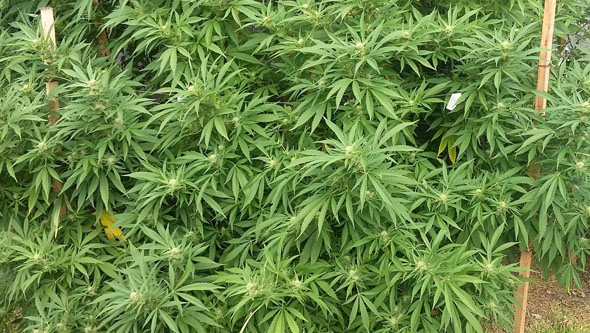
Types of Nutrients
Cannabis plants need macro and micro-nutrients to guarantee optimal growth during their life cycle. Macro-nutrients are one of the main compounds in cannabis plants, and micro-nutrients are those needed in smaller amounts. They’re also incredibly important when it comes to metabolic functions in plants (enzymes, vitamins and other additives).
Nutrients can be classified as follows:
- Primary macro-nutrients: Carbon C, Oxygen O, Hydrogen H, Nitrogen N, Phosphorus P, Potassium K.
- Secondary macro-nutrients: Calcium CA, Magnesium MG, Sulphur S.
- Micronutrients: Iron Fe, Copper Cu, Magnesium Mn, Zinc Zn, Molybdenum MO, Boron B, Chlorine Cl, Silica Si, Sodium Na.
These nutritional elements have to be used in the right proportions (NPK ratio) depending on the needs of your plants, which change depending on the stage they’re in; rooting, growth or flowering. Plus, you’ll need to use certain amounts of nutrients depending on other factors such as the state of the growing medium, the size of the flowerpots, root system conditions or environmental conditions.
Nutrients and Additives for Cannabis
Nutrients for plants can be classified mainly by where they come from (composition) and how they’re used (depending on the stage the plants are in). Where nutrients are obtained from and their composition can tell us if they’re easily absorbed or if they’re slow transforming nutrients.
Plants don’t have a stomach like animals do, so they depend on micro-organisms such as fungi and bacteria to decompose organic material and allow it to be absorbed through roots. This happens, for example, with organic powdered nutrients.
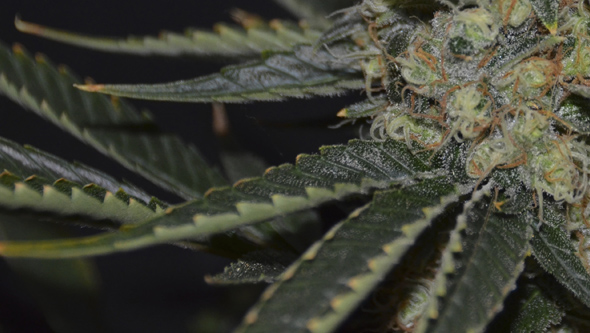
Generally speaking, cannabis plants absorb mineral fertilizers much faster than organic fertilizers. Most organic liquid fertilizers are pre-digested, which means that they’re mixed in tanks with beneficial bacteria and oxygen to decompose organic elements and make them easier to absorb. There are also some which come filtered, such as Botanicare, which has a pure organic format that’s easy to absorb as it’s been filtered 20 times; the final product isn’t altered as easily as a non-filtered fertilizer.
Nutrient Origins
Organic Fertilizers and Additives (bio)
- Organic nutrients and additives contain elements from natural sources such as vegetables, algae, guano and others. They tend to have more nutrients and compounds, which means more intense aromas and flavours, original to each strain.
- Combined in the right way, these nutrients can offer high yields just like mineral products, providing better organoleptic properties.
- They’re absorbed slower than mineral nutrients, so they’re easy to use and it’ll be harder to accidentally overfertilize.
- Root cleaning is much easier using organic nutrients; plants metabolize nutrients much faster.
- They respect the environment.
Chemical/Miçneral Fertilizers and Additives
- Mineral fertilizers and additives don’t come from Natural elements like bio products, although plants can absorb them much faster than organic nutrients. Thanks to this fast absorption, plants tend to grow much faster, so it’s easier to obtain large yields, and also easier to overfertilize.
- You’ll have to be meticulous when it comes to frequency and dosage when it comes to this type of nutrients, keeping a close eye on your plants to avoid root blockage. It’s highly recommended to use enzymes during the growing process and cleaners towards the end of the flowering process in order to make the root cleaning process easier, removing any bad tastes from the buds.
- Mineral products tend to be more affordable and more concentrated than bio products.

Bio-mineral fertilizers and additives (organic-mineral)
- Biomineral fertilizers and additives tend to contain an organic base and mineral nutrients, which make them easily absorbed.
- Growing cannabis with this type of nutrient gives your plants a full nutritional input for optimal growth, and high quality, large yields.
- They’re easier to use than mineral products, as they don’t leave behind as much residue.
- If you flush plants’ roots out properly 10 days before harvesting, you’ll get flavourful and intense aromas from the flowers, just like with organic nutrients – a perfect balance.
- They tend to be highly concentrated, so it’s important to pay attention to the manufacturer’s instructions.
Depending on the stage your plants are in, different types of nutrients and/or additives need to be used.
Depending on Purpose
Root Stimulants
Products designed for rooting are nutrients which contain high amounts of plant hormones, mostly auxins, acting as a chemical sign that tells cells what to do. The addition of these phyto-hormones (natural hormones produced by plants) is not necessary as plants synthesize them already, but they do favour and accelerate root system growth and amount of nutrients that your cannabis plants can absorb, and transform into new tissue.
We highly recommend using a root stimulant from the moment you plant germinated seeds or clones, during the first few growth weeks, each time you transplant and when maintaining mother plants.
Among some of the most used and sought-after products by our customers, you can find Rhizotonic by Canna, the concentrated Rhizo Blast by Botanicare, the effective Hesi Root Complex or the affordable Rootfast.
Mycorrhizae and Trichoderma are neither nutrients nor stimulants, they’re beneficial microorganisms that favour the root system; we recommend using these products to improve the root system if you’re using organic products – if you grow using mineral fertilizers it won’t be as effective, as mineral fertilizers get rid of certain strains of mycorrhizae and Trichoderma.
Growth Fertilizers
Cannabis plants during the growth stage mainly need nitrogen, phosphorus, and potassium (NPK). Growth fertilizers contain large amounts of nitrogen compared to phosphorus and potassium, as nitrogen is one of the most used compounds in plants when it comes to creating new stems, sprouts and leaves, as well as increasing chlorophyll and the general appearance of the plant.
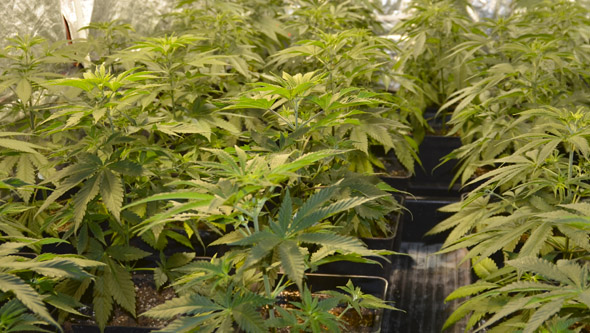
- Nitrogen (N): this is generally found in nitrate format (NO-3) and ammonia (NH+4). This compound is the most important compound during this period, forming part of the plant’s structure (aminoacids, proteins…) including tissue (roots, branches, leaves) and basic metabolic functions.
- Phosphorus (P): generally found as phosphorus oxide, it also forms part of the plant’s structure such as roots and pistils. It’s also involved in important metabolic processes such as transforming sugars.
- Potassium (K): normally found as potassium oxide, it’s involved in metabolic functions such as photosynthesis, as well as opening and closing of stomas etc.
You’ll also need to keep in mind the type of substrate used when it comes to fertilizing your plants.
- If you use an inert substrate such as coco coir, you’ll need to fertilize from the start. With no fertilizer, your plants won’t have any nutrients to feed on.
- If you use fertilized soil, you’ll need to keep in mind the amount of time nutrients will be available in the soil. For example, light soil such as Light Mix by BioBizz contains around two weeks of nutrients, medium soils such as Grow Mix contain around 4 weeks, and heavily fertilized soils such as Kilomix or All Mix contain up to 6 weeks of nutrients. This means that during the period in which there are nutrients in the soil, you shouldn’t be using growth nutrients, only root stimulant.
Among the most used and sought-after growth fertilizers here at La Huerta Grow Shop, we have Bio Grow by BioBizz, Pure Blend Pro Grow by Botanicare which is an efficient bio fertilizer, or Terra Vega by Canna, a mineral fertilizer.
Flowering Fertilizers
Cannabis plants during the flowering stage direct their energy towards creating new flowers (buds) and cannabinoids (THC, CBD, CBN, CBG etc) which is why they need more phosphorus and potassium during this stage, and a lot less nitrogen (although they still need it, in smaller proportions); the plant will no longer need to produce new leaves or stems. Flowering nutrients are also NPK fertilizers, with different proportions than growth nutrients.
If, during the flowering process, there’s an issue with excess nitrogen or magnesium, plants will produce too much chlorophyll and it will be much harder to wash out their roots.
You’ll need to start using flowering fertilizers from 10 – 15 days after flipping the lights to the flowering period and once you start seeing pistils group together (small white hairs) along the plant.
Some of the most used flowering nutrients by our customers are the eco Bio Bloom by Biobizz, the complete Pure Blend Soil by Botanicare, the mineral fertilizer Terra Flores by Canna, or the two part fertilizer Sensi Bloom by Advanced Nutrients. For those that grow outdoors in fields or large flowerpots and need powdered fertilizers, the best thing to do is use a nutritional base for flowering such as Bat Guano.
Stimulants, Boosters or Metabolism Accelerators
Cannabis plants absorb nutrients mainly through their roots and they transform them depending on their use, covering their needs. Stimulants or boosters contain mainly humic and fulvic substances. They make it easier for nutrients to be absorbed and transported throughout the plants’ cells. They tend to contain vitamins and aminoacids, which are key when it comes to growing new tissue.
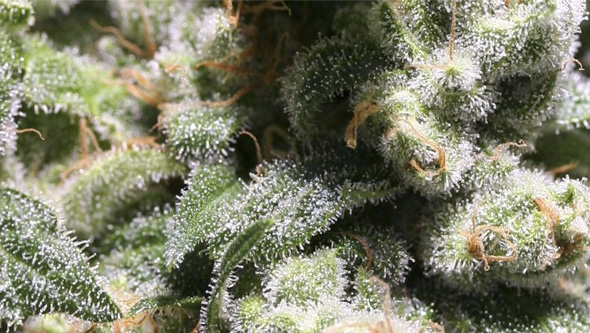
If your plants are currently in the growth stage, as well as growth fertilizer as a base nutrient, you can also use a growth stimulant such as Alg-a-Mic by BioBizz or Green Explosion by Top Crop. You can also use a metabolism accelerator such as Liquid Karma by Botanicare in order to make the most of the nutrients used and give your plants a little extra energy; this makes for faster growth and healthier, sturdier plants, as well as extra resistance to adverse situations. Most growth stimulants can be used from the start of the growing process until the switch to flowering or the second flowering week. Remember to respect the manufacturer’s dosage and instructions, as well as keeping an eye on the state of your plants.
If your plants are going to be starting the flowering stage, we recommend using a flowering stimulant or metabolism accelerator, which can help the plants to create new buds and cannabinoids. Among the most used products by our customers, we have the famous Delta 9, which considerably increases resin and flower yield; Bio Boost by Canna which is entirely organic; the efficient Big One by Top Crop, and the potent Boost Accelerator. Generally speaking, flowering stimulants are used during the flowering period. Make sure to follow manufacturer’s instructions and keep an eye on the plants.
PK or Bud Fatteners
Cannabis needs quite a large amount of phosphorus and potassium during the flowering stage, especially from the 3rd – 4th week onwards in order to create new flowers. As well as having to use a flowering fertilizer to feed your plants, if you give them phosphorus and potassium they’ll increase their bud yield.
It always pays to be cautious when it comes to using this type of products. Keep in mind that plants get phosphorus in their base nutrients – if you go too far, you may end up blocking the plants’ roots and cause deficiencies of other kinds and bad reactions.
There are different types of bud fatteners with different concentrations of phosphorus and potassium – the most well known is PK 13 14. Other products with lower concentrations can be found, such as organic PK’s like the concentrated Bio Bloombastic by Atami, and higher concentrations can be found in mineral products, such as Bloombastic Blossom Builder. When growing in the ground, where it’s better to use powdered nutrients that cover more surface area, you can use the potent Blossom Blaster or Monster Bloom.
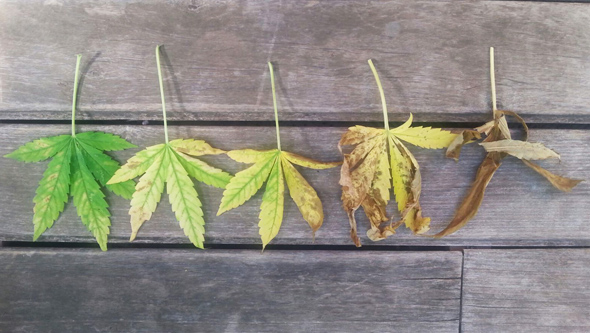
Enzymes
Enzymes are compounds that favour specific biochemical reactions, such as the creation of citric acid. Using enzymes in cannabis plants can help to decompose organic materials such as dead roots. They help to decompose unwanted salts that accumulate in soil and roots, keeping the balance and improving nutrient absorption.
It’s recommended to use enzymes during the entire process, especially during the flowering period and in grows with high nutritional needs or that use tap water. We always recommend using osmosis water or water with a low content in salts and minerals.
There are many different enzyme products, and some of the best sellers thanks to their price/quality ratio are Cannazym by Canna, Atazyme by Atami and PowerZyme by Hesi.
Other Additives and Nutritional Complements for Cannabis
As well as all of the previously mentioned nutrients, plants sometimes need certain additives and nutritional complements in order to cover all of their needs at all times and obtain the desired quality.
There are different types of additives, from carbohydrates and sugars to increase bud density and weight such as Bud Candy by Advanced Nutrients, terpene (aroma) increasers such as Flavor by Atami, as well as additives used by experienced growers such as Mineral Magic, which provides plenty of nutrients and root protection.
Plus, there are mononutrients designed to cover specific needs such as nitrogen, magnesium, calcium or phosphorus, getting rid of deficiencies at any time.
Cleaners
Root flushing isn’t a hard task to undertake when you only have a few plants or if you use organic nutrients; it won’t take long to reduce the colour in your plants and help them to metabolize leftover nutrients. We recommend using cleaners around 10 days before harvesting, such as Canna Flush by Canna, to make root flushing easier. These products help to drain any left over salts and minerals in the substrate and roots.
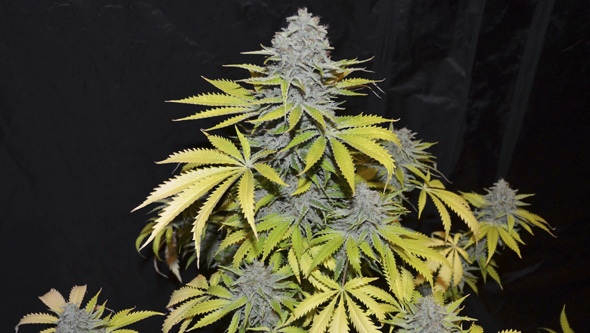
As well as cleaners, there are also products like Flawless Finish which block nutrient absorption and force the plant to absorb and feed on the nutrients left over in their leaves, going yellow in the process.
There are also products such as Ripen, which accelerate plant maturation. These products increase the speed of harvesting by a few days in later strains or strains that have had issues with insects and pathogens.
Nutrition Packs
Most fertilizer brands offer nutrient kits in which you can find all of the necessary nutrients to grow plants from start to finish. This is easier than choosing the products and additives one by one, allowing you to follow the same range and brand too. This can help avoid issues such as over-fertilization. Some of the most used kits are BioBizz’s Outdoor TryPack, ideal for growing outdoors in flowerpots, and the mineral Hesi Starter Pack or Atami Micro Kit, which is ideal for growing organically indoors.
What Nutrients to Use
Our answer is: the best ones you can afford. Of course, everybody needs to adjust to their budget, however if you can afford it you shouldn’t hold back on fertilizers and additives.
If you’re looking for a large or decent yield with aromas true to the strain, intense and diverse, we recommend using organic products. However, if you’re looking for affordable feeding with high yields and you don’t mind missing out on some aroma and flavour, you can use mineral fertilizers. If you’re looking for something in between both, you can go with bio-mineral fertilizers.
Keep in mind the growing medium or substrate you’re using; coco coir doesn’t need the same nutrients as soil or hydroponic and aeroponic grows.

Not everything that’s organic is good and not everything that’s mineral is bad. The origins of a product are incredibly important. It’s not quite the same to use a compost or humus from an industrial area than the same product obtained from natural, non-exploited areas. Plus, the quality of nutrients designed for medicine isn’t the same as those designed for industrial uses, which are less refined. You should always keep in mind the composition and origins of products used.
When to Fertilize Cannabis Plants
Once again, let’s have a look at the difference between fertilizing and watering. Watering is hydrating or giving your plants water, and fertilizing is when you feed your plants nutrients. Nutrients are not always necessary, plants may need water but no nutrients.
Regarding the topic of when to fertilize cannabis plants, there are many different points of view, and it’s important to adapt to the plants’ needs. As we were saying earlier, this will depend on the type of substrate, size of the flowerpot, environmental conditions and the state your plants are in.
Generally speaking, the reasonable thing to do is to fertilize more at lower amounts rather than feeding less with higher concentrations of nutrients. Watering more often, with smaller amounts of nutrients – it’s always easier to identify and fix and deficiency than over-fertilization and excess.
Fertilizing when Rooting
Once seeds have germinated and been planted, the ideal thing to do would be to use a root stimulant during the first 2-3 growth weeks and after every transplant. Root stimulants provide phyto-hormones and nutrients that accelerate root growth, improving the general growth of the plant in one of its most delicate moments.
When it comes to using nutrients like growth fertilizers, you’ll need to keep in mind the growing medium being used. If you use an inert substrate like coco coir or rockwool, you’ll need to use growth fertilizers from the very start. On the other hand, if you use fertilized soil you’ll need to make sure you know the amount of nutrients in the soil so you know when to start adding your own, as well as keeping an eye on your plants’ growth.
As a general rule of thumb, during the rooting stage you should use 1/3rd of the growth fertilizer indicated by the manufacturer. Increase the dosage during the first two weeks until you reach the right dose.
Fertilizing During Growth
During the growth stage, cannabis plants are capable of creating new roots, as well as new stems and leaves. This is why nitrogen is needed during this stage, as well as potassium and phosphorus.
Lack of nitrogen is most frequent during the growth or veg stage. It can be seen on the plant as a loss of colour in general. It can easily be fixed by using an NPK fertilizer or with a nitrogen mononutrient.
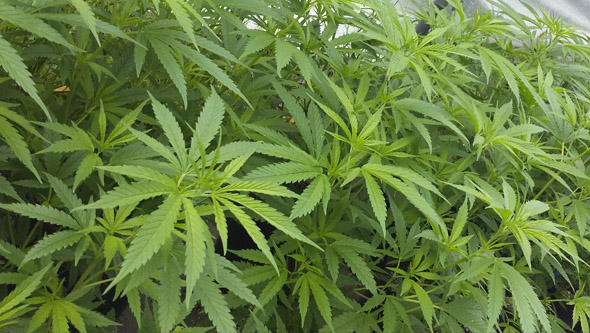
Unless the manufacturer indicates daily use, fertilizers should be used sparingly to start with, once a week. If the plant looks like it needs more via colouring and general aspect, you can increase the dosage a little bit; we don’t recommend extending the dosage designated by the manufacturer.
If your plants grow fast it’s a good sign, but it does also mean that they’ll be absorbing plenty of nutrients and you’ll need to top keep them fed. Keep an eye on the appearance of your plant so as to not over feed it. If growth stops, reduce the amount of fertilizers and make sure that the substrate isn’t moist for too long.
If your plants’ leaves are dark green, have yellow tips and are starting to curl up, they have probably been over fed. Once this point has been reached, you’ll need to flush out their roots before fertilising again. This can be done by using 3 litres of water per litre of substrate in the flowerpot to drain out any unwanted salts and minerals. You can also use enzymes to avoid nutrient build-up; if your plants have been over-fed, we recommend using a cleaner such as Canna Flush in order to make flushing the roots much easier.
During the growth stage, you can give your plants a little extra help using growth stimulants such as Green Explosion by Top Crop, or metabolism accelerators such as Liquid Karma by Botanicare.
Logically, any deficiency or excess can cause a loss in yield. It’s harder to treat excess compared to deficiencies; like we were saying before, perfection lies in balance.
Fertilizers during Flowering
The flowering stage is a bit more complicated than the growth period when it comes to fertilizers. Mistakes made during that stage have more of an impact on the final result of the harvest. There are usually two main mistakes:
- Not fertilizing enough and getting less yield than what was expected, although with decent flavours.
- Over-feeding using flowering nutrients and ruining the quality of the harvest.
During this phase it’s also harder to identify deficiencies; the nutrients needed might be available in the soil but your plants may not be able to absorb them due to the wrong pH or EC levels. This is why we recommend using enzymes once a week, as they help to keep a balanced substrate. You’ll also want to test the EC in the water that drains out the bottom of your flowerpots. If the EC in the water is over 2.5, flush out the roots or water again with no nutrients until the EC in the drained water has lowered.
During the flowering stage, cannabis plants consume much more phosphorus and potassium, and a bit less nitrogen. From the second week onwards after flipping the lights you can use flowering periods, using the minimum dosage according to the manufacturer. Increase the dose little by little as they begin to grow, and then you’ll need to stop feeding them and flush their roots as they mature. We don’t recommend going over the maximum limit stipulated by the manufacturer.
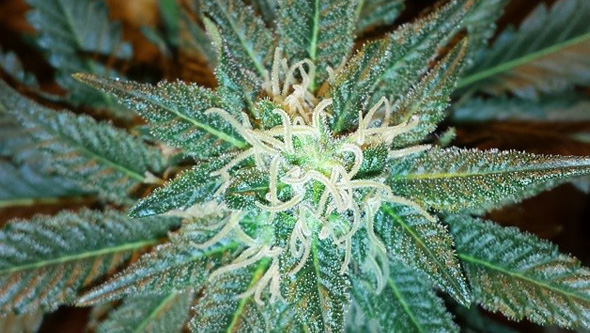
As well as base nutrients for flowering, which is what your plants need to flower properly, during this stage you can help them out with flowering metabolism stimulants such as Delta 9, Bio Boost or Top Max, among others.
If you’re looking to obtain maximum yields, you can use fatteners or bud strengtheners with PK (phosphorus and potassium). These are available in different concentrations and proportions, depending on how you want to grow your plants.
In order to cover specific needs or deficiencies in plants, you can use other types of additives such as Carboload to increase bud density and weight, or mononutrients such as phosphorus, magnesium, calcium and potassium, or terpene (aroma) increasers, used towards the end of the flowering period before flushing the roots.
Fertilizing When Plants are Mature
Over the last few flowering weeks (the last 7 – 10 days before harvesting) you should stop fertilizing. This is done to make sure that buds have hardly any nutes left in them. This allows for buds to have more flavour and aroma. During these last two weeks the buds hardly grow, they’re simply maturing just like other fruits do, so they don’t need fertilizer.
If you’ve used too much fertilizer, it can be hard to get your plants to absorb it all and go back to normal – we recommend washing out their roots once it twice 7-10 days before harvesting – you can make this easier by using cleaners. During this process, the leaves should be a yellowish colour, and end up going completely yellow towards the end. Not all strains lose colour, but you’ll notice a paling in the green.
During the last few days, water using small amounts, and give the plant periods of dryness and water. This causes a little bit of stress on the plant which can help to achieve mature resin and reduce water leftover in the plant.
General Advice
- Make sure to use osmosis water or water with a low salt/mineral content; if you use tap water, make sure to use enzymes during the entire process.
- Adjust the pH (water acidity) and if possible, the EC (salt concentration) after mixing fertilizers and before watering; it’s important for plants to correctly absorb the provided nutrients.
- It’s always better to treat a deficiency in comparison to an excess, so it’s good to be cautious when it comes to dosage and fertilizer frequency.
Until next time!
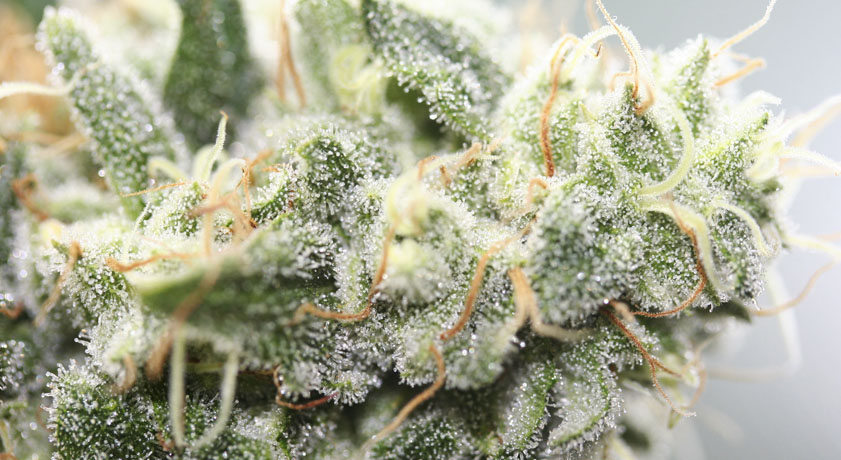


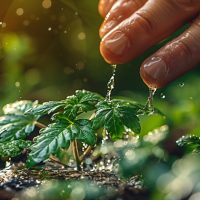
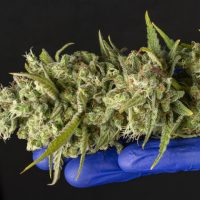
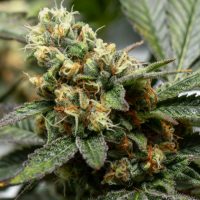

2 responses
thank you so much for sharing this beautiful knowledge about organic nutrients. It’s completely satisfying my doubts to grow plants of marijuana(weed). your blog gives full clarity in brief for organic fertilizer like which one is better and when, how, and the best way, every point is nicely explained by you. Without fertilizer, it is not gonna possible to get healthy plants. Again thank you for this and I love to know.
Hello,
Thank you for your comment,
Best regards